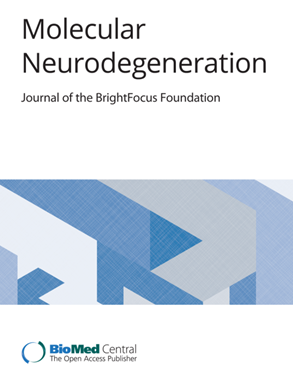Lewy body dementia: exploring biomarkers and pathogenic interactions of amyloid β, tau, and α-synuclein
IF 17.5
1区 医学
Q1 NEUROSCIENCES
引用次数: 0
Abstract
Lewy body dementia (LBD) is a neurodegenerative disorder characterized by a combination of progressive dementia and spontaneous parkinsonian symptoms. As the second most prevalent form of neurodegenerative dementia after Alzheimer’s disease (AD), LBD necessitates a deeper understanding of its pathogenesis to enable the development of targeted therapeutic interventions. While numerous reviews focus on documenting the clinical manifestations and therapeutic modalities for LBD, animal models provide valuable insights into the underlying mechanisms and potential therapeutic strategies. In this review, we systematically analyze the hallmarks of LBD pathogenesis, genetic risk factors, clinical features, and treatment strategies. Importantly, we emphasize and critically evaluate the pivotal role of animal models in LBD research in advancing our understanding of this disorder, offering a comprehensive framework to elucidate the interactions among misfolded proteins and their role in LBD pathogenesis. Our review proposes new directions for LBD therapeutic management and facilitates the development of innovative pharmacological interventions.路易体痴呆:探索β淀粉样蛋白、tau蛋白和α-突触核蛋白的生物标志物和致病相互作用
路易体痴呆(LBD)是一种以进行性痴呆和自发性帕金森症状相结合为特征的神经退行性疾病。作为仅次于阿尔茨海默病(AD)的第二常见的神经退行性痴呆形式,LBD需要更深入地了解其发病机制,以便开发有针对性的治疗干预措施。虽然许多综述集中在记录LBD的临床表现和治疗方式,但动物模型为潜在的机制和潜在的治疗策略提供了有价值的见解。在这篇综述中,我们系统地分析了LBD的发病机制、遗传危险因素、临床特征和治疗策略。重要的是,我们强调并批判性地评估动物模型在LBD研究中的关键作用,以促进我们对这种疾病的理解,提供一个全面的框架来阐明错误折叠蛋白之间的相互作用及其在LBD发病机制中的作用。我们的综述为LBD的治疗管理提出了新的方向,并促进了创新药物干预的发展。
本文章由计算机程序翻译,如有差异,请以英文原文为准。
求助全文
约1分钟内获得全文
求助全文
来源期刊

Molecular Neurodegeneration
医学-神经科学
CiteScore
23.00
自引率
4.60%
发文量
78
审稿时长
6-12 weeks
期刊介绍:
Molecular Neurodegeneration, an open-access, peer-reviewed journal, comprehensively covers neurodegeneration research at the molecular and cellular levels.
Neurodegenerative diseases, such as Alzheimer's, Parkinson's, Huntington's, and prion diseases, fall under its purview. These disorders, often linked to advanced aging and characterized by varying degrees of dementia, pose a significant public health concern with the growing aging population. Recent strides in understanding the molecular and cellular mechanisms of these neurodegenerative disorders offer valuable insights into their pathogenesis.
 求助内容:
求助内容: 应助结果提醒方式:
应助结果提醒方式:


